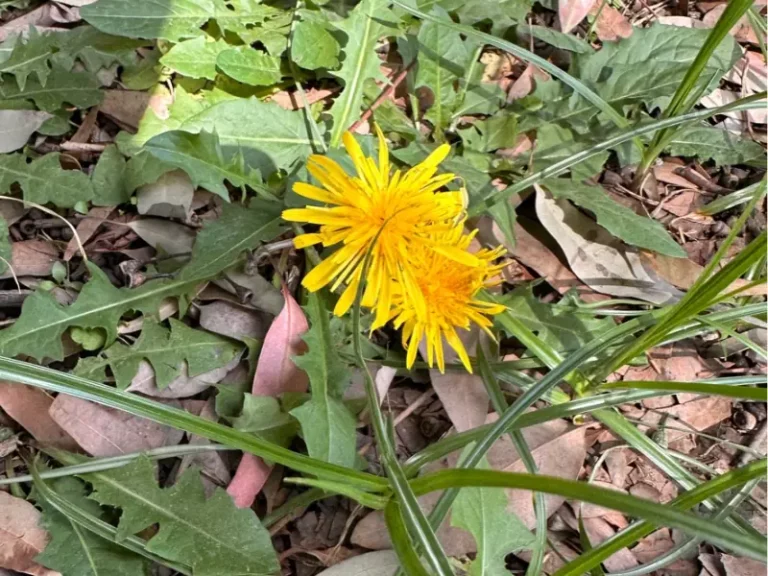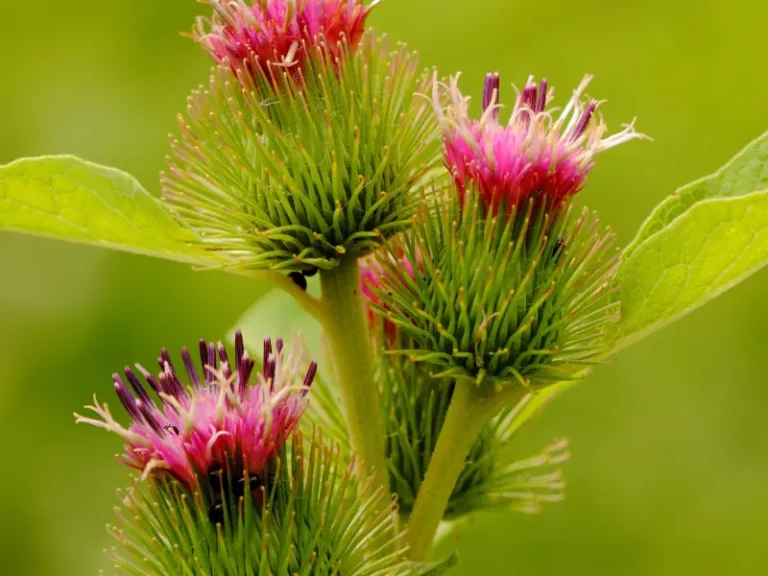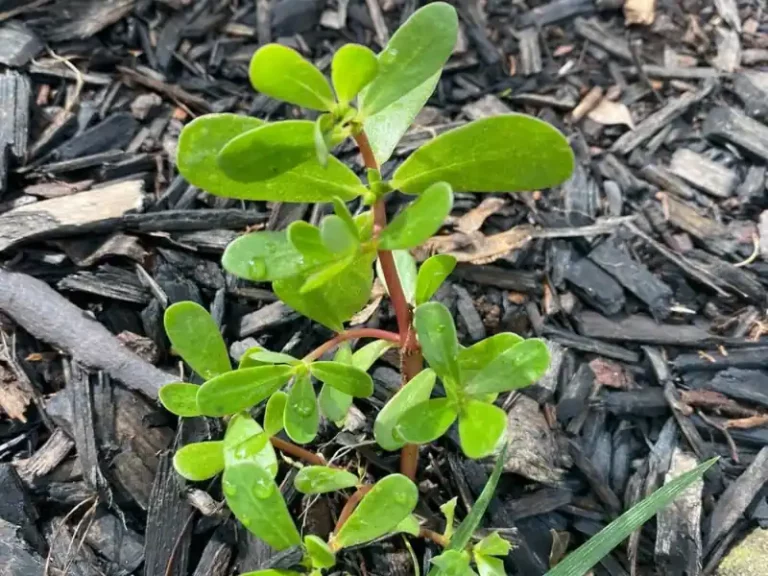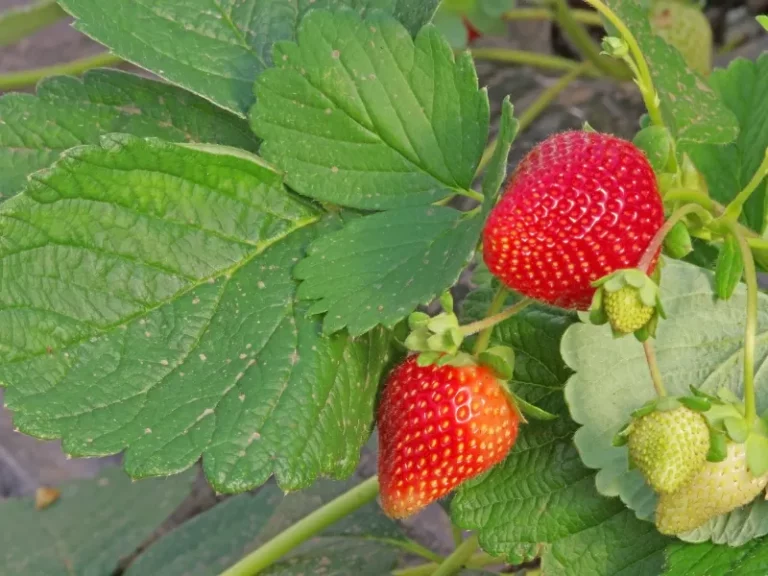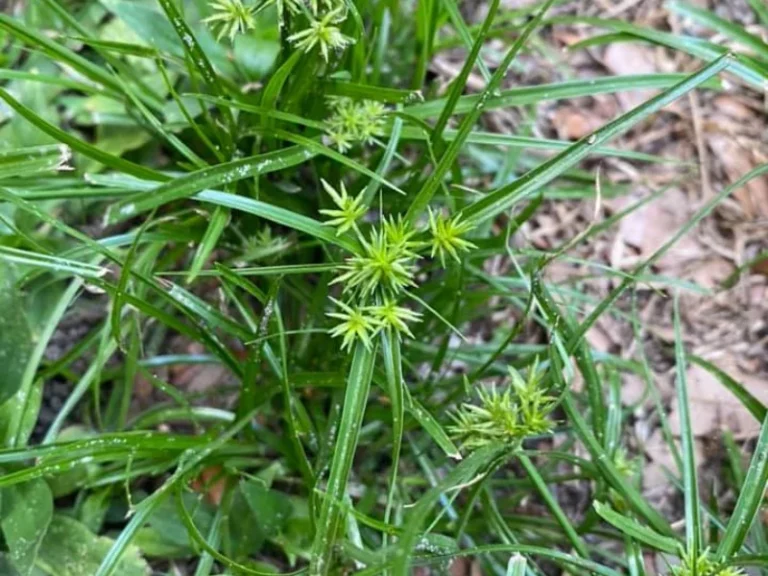Weeds That Look Like Clover (Trifolium repense)
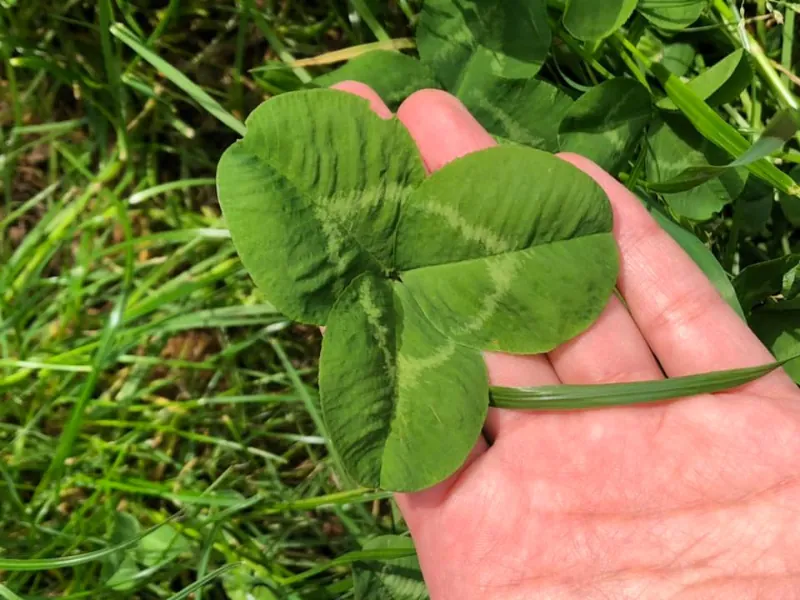
Clover is a common weed that most people can easily recognize by its three-leaflet leaves shaped like a shamrock. But there are many other weeds that look almost exactly like clover, which can fool even experienced gardeners.
Clover has three oval-shaped leaflets connected at the stem, resembling a shamrock, with rounded tips and smooth edges. It also features small white to pinkish flowers in clusters on tiny stems emerging from the main stem.
Even though some weeds look very similar, clover has small differences from these copycats.
Weeds that resemble clover include oxalis, black medic, suckling clover, red clover, shamrock, spotted deadnettle, Japanese clover, lesser celandine, iron cross, and four-leaf clover. Their leaves can have three parts, like clover, but have different colors, shapes, textures, and flowers.
This guide covers the most common clover lookalikes, how to tell them apart, and how to control them. That way, you’ll never mistake a weed like yellow woodsorrel for clover again
Weeds that look like clover
After reviewing the descriptions of weeds resembling clover, I noticed the most common characteristic is the three-parted, shamrock leaf shape that mimics clover’s leaf form.
Several other lookalikes also produced small yellow flowers clustered at the ends of stems like clover. Some were also low-growing, with creeping stems along the ground, allowing them to spread easily and blend in with real clover.
Let’s look at each one of these clover look-alikes!
1. Black medic (Medicago lupulina)
First on our list is the black medic, also known as black clover, Yellow Trefoil, and Hop Medic, which shares the same legume family (Fabaceae) as clover.
At first glance, you might easily mistake black medic for clover in your yard. Its leaves consist of three oval leaflets, just like clover, giving it that familiar shamrock shape when seen from above.

When you look closer, you’ll notice the leaflets have tiny teeth along their edges, which clover lacks. Another key difference from real clover leaves is that the middle leaflet has a longer stalk than the others.
Black Medic also produces bright yellow flowers in clusters from May through September, resembling clover’s flower heads. The black medic also has nodules on its roots that fix nitrogen in the soil, like clover, since they are leguminous plants.
Black medic thrives in lawns, fields, and waste areas. It flourishes in full sun and slightly dry conditions. This imposter weed prefers richer soils but can grow in poor, compacted soil since it is a legume and can fix nitrogen.
Black medic germinates in early spring, forming a mat-like carpet of low foliage that spreads via aboveground stolons, similar to clover.
Controlling black medic
Use a pre-emergent herbicide like Dimension with dithiopyr or Rout containing oxyfluorfen and oryzalin. These stop black medic seeds from germinating. Then, use two or three-way weedkillers like 2,4-D and dicamba, post-emergent control of already growing black medic.
2. Yellow woodsorrel (Oxalis stricta L.)
Yellow woodsorrel is a common name for Oxalis stricta, a plant with several other common names, including lady’s sorrel, lemon clover, sheep’s clover, sheep sorrel, sheep sour, and sourgrass. It belongs to the woodsorrel family (Oxalidaceae).

Yellow wood sorrel has light green, three-parted leaves that look nearly identical to clover. Each leaf comprises three heart-shaped leaflets on long petioles emerging from the base. This shamrock shape and trifoliate leaf is how you confuse the two!
While their leaves are similar, a few key differences set yellow woodsorrel apart from clover. The leaves of yellow woodsorrel are a lighter green and fold up at night, unlike clover’s leaves. The flowers have 5 yellow petals rather than clover’s rounded white flowers. Also, yellow wood sorrel lacks stipules on the leaf base that are present on clovers.
Additional facts about yellow woodsorrel:
- It has a lemony flavour since it contains oxalic acid and edible leaves used in salads.
- Its seed capsules burst open, shooting seeds over 10 feet away.
- Spreads rapidly by seeds and underground rhizomes.
Controlling yellow woodsorrel
Hand-pull small patches or spot spray with a broadleaf herbicide of a combination product of 2,4-D, MCPA and dicamba, fluroxypyr, mesotrione and others. Otherwise, use pre-emergent herbicides like dithiopyr, flumioxazin, and oxadiazon in spring to prevent.
3. Suckling clover (Trifolium dubium)
Suckling clover, also known as lesser hop clover, lesser trefoil, little hop clover, yellow shamrock, or yellow suckling clover, is an annual weed in the bean family that blooms bright yellow flowers from late spring through early fall. The flowers attract bees to their nectar.
The taxonomy of suckling clover is:
- Kingdom: Plantae
- Phylum: Tracheophyta
- Class: Magnoliopsida
- Order: Fabales
- Family: Fabaceae
- Genus: Trifolium
- Species: dubium
Suckling clover harbours a mite that affects clover. However, it is also a beneficial plant for apple trees. When grown near apple trees, it can improve the taste of the apples.

At first glance, suckling clover looks almost identical to regular clover. It has the iconic three-parted leaf of oval leaflets that create the familiar shamrock shape.
But upon close inspection, the differences become evident:
- Suckling clover has hairy stems, while clover has smooth stems.
- The leaves are brighter green and more slender than clover’s leaves.
- The yellow flowers cluster together, unlike clover’s solitary blooms.
- It can grow over 2 feet tall, much taller than low-growing clover.
4. Red clover (Trifolium pratense L.)
Red clover, also called purple clover, beebrush, and meadow clover, is a short-lived perennial weed that thrives in lawns, fields, and roadsides throughout the northeastern United States. It is also used as a pasture, silage, and for hay.
Red clover is classified as a perennial legume but also acts like a biennial.

It prefers full sun and moist, well-drained soils with lower pH levels. It does best in cool temperatures between 60-80°F and with ample rainfall.
Red clover is easily mistaken for white clover. The easy-to-mix-up features between the two are the three oval leaflets per leaf that form the classic shamrock shape with a watermark on the leaflets.
But here is where the differences occur:
- Red clover grows taller, up to 2 feet high, versus clover’s 2-6 inch height.
- Stems and leaves have more reddish hues.
- The flowers are pinkish-purple pom-poms, not white.
- It has a thick tap root that grows to 24-36 inches, while clover has fibrous roots.
- Its seeds are purple to yellow, while clover seeds are yellowish-brown.
The best time to spot the differences is when both are flowering – the contrasting flower color and shape stand out.
Control
To control red clover, mow regularly and overseed the grass. Herbicides like 2,4-D, glyphosate, and dicamba also work well, but you can also hand-pull small patches.
5. Shamrock (Trifolium dubium)
Shamrock plants are often sold around St. Patrick’s Day as festive decorations. It is a herbaceous perennial plant that flowers from late summer to early fall. It is also called suckling clover and is an annual weed.
It thrives in the same cool, moist areas as clover in lawns, fields, and waste ground.
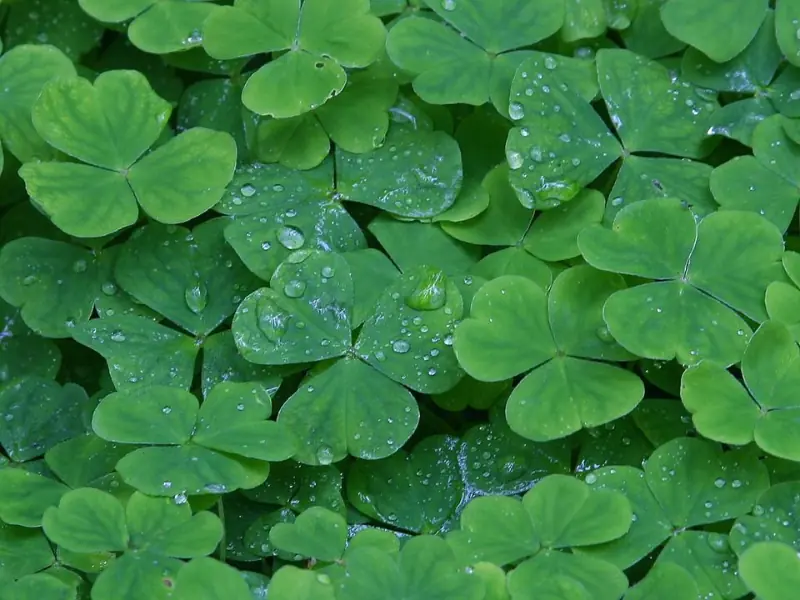
It looks a whole lot like Clover. Its leaves are made up of three oval-shaped leaflets radiating from a central stem, creating that familiar shamrock shape. The leaflets have smooth edges and are bright green in color. Shamrock grows close to the ground, spreading through stems that creep along the lawn. It also has tiny yellow flowers clustered at the ends of its creeping stems.
But here is where the differences emerge:
- Shamrock has hairy stems, while clover’s stems are smooth.
- Shamrock leaves are bright green; clover is darker.
- Shamrock flowers are more clustered.
- Shamrock is an annual, clover is a perennial.
Flowering time is the best stage to distinguish shamrock from clover. The yellow blooms and hairy stems set shamrock apart from the white clover flowers and smooth stems.
6. Spotted deadnettle (Lamium maculatum)
The spotted deadnettle is a common weed that is surprisingly easy to mistake for clover. This low-growing perennial is one of around 50 species in the Lamium genus native to Europe, western Asia, and North Africa.
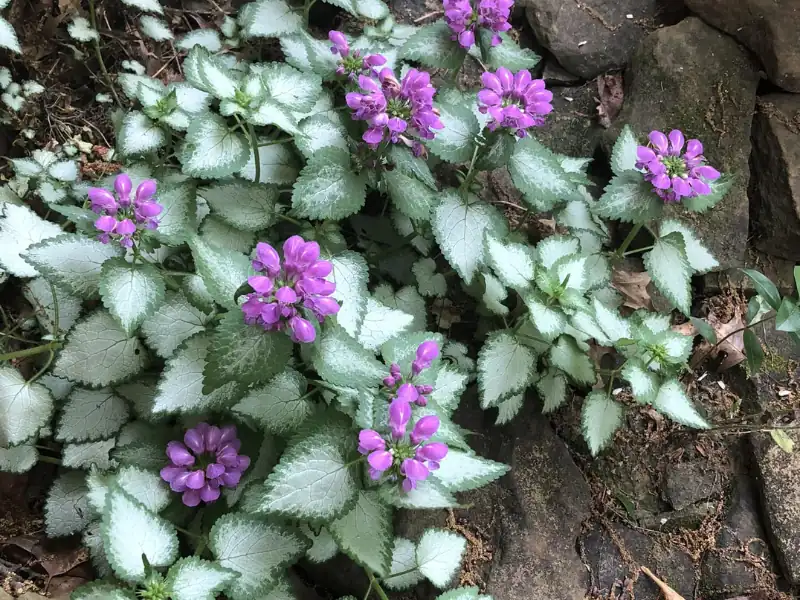
It gets the name “deadnettle” because its leaves look similar to stinging nettle leaves but lack the sting. Spotted deadnettle thrives in partial to full shade and in evenly moist, well-drained, moderately rich soil.
Differences:
- Spotted deadnettle leaves are lightly hairy and often have white variegation on the surface, while clover leaves are smooth.
- Its small white flowers do not resemble the rounded flower clusters produced by clover.
7. Japanese clover (Lespedeza striata)
Japanese clover also called common lespedeza, is a summer annual weed that forms patches up to 18 inches wide and 5 feet tall. This species has wiry stems and trifoliate leaves composed of three smooth, oblong leaflets with a short spur on each tip. It has tiny pink to purple flowers that bloom in late summer.
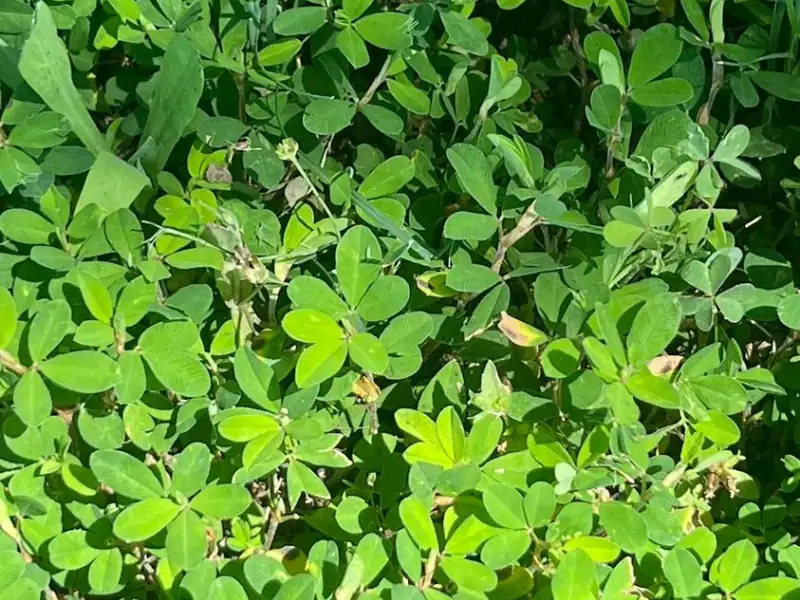
The trifoliate leaves of Japanese clover resemble the clover’s signature shamrock shape. But differences become evident when you inspect closer:
- Japanese clover has a more open and upright growth habit, unlike clover’s dense, low growth.
- Its leaflets and flowers are smaller than clover’s.
- The tiny flowers do not resemble clover’s rounded heads.
Japanese clover thrives in poor, dry soil and thin, sparse lawns. It spreads rapidly in ideal conditions.
Control
Spot treat young plants with a liquid broadleaf herbicide containing active ingredients like 2,4-D or dicamba. Take care not to spray dicamba near the roots of trees and shrubs, as it can be absorbed and cause plant damage.
8. Four-leaf clover (Ficaria Verna)
The four-leaf clover is renowned as a lucky symbol, but did you know it is just a variation of the regular white clover? Finding a four-leaf version is rare – only 1 in 10,000 clovers will have the lucky four leaves.

Four-leaf clovers can be identified by their iconic four leaflets rather than the usual three. The four oval leaflets radiate from a central stem in a lucky four-leaf shamrock shape. Otherwise, their features closely match standard clover.
Therefore, the difference between the four-leaf clover and a real clover is in the number of leaflets, with clover having three leaflets and a four-leaf clover having four.
The individual leaflets have the same smooth, rounded edges with no serrations. Their size, shape, and color closely match regular clover leaves. Even the tiny white flowers look identical in shape and placement.
9. Iron cross (Oxalis tetraphylla)
Iron cross, also known as ironweed or upright yellow woodsorrel, is an herbaceous perennial weed that closely resembles clover. It is part of the Oxalis genus and is native to South Africa.

Iron cross has trifoliate leaves with three heart-shaped leaflets that create the familiar shamrock form. The foliage is light green, and the stems often have a reddish hue. Unlike clover’s rounded white flower heads, it produces yellow flowers with five petals.
The iron cross convincingly mimics Clover’s classic three-parted leaves. However, there are some differences including:
- Iron cross grows more upright, reaching 1-2 feet tall rather than hugging the ground.
- Its flowers are bright yellow, not white.
- The foliage is lighter green and folds up at night.
- It spreads aggressively through bulbils and rhizomes underground.

